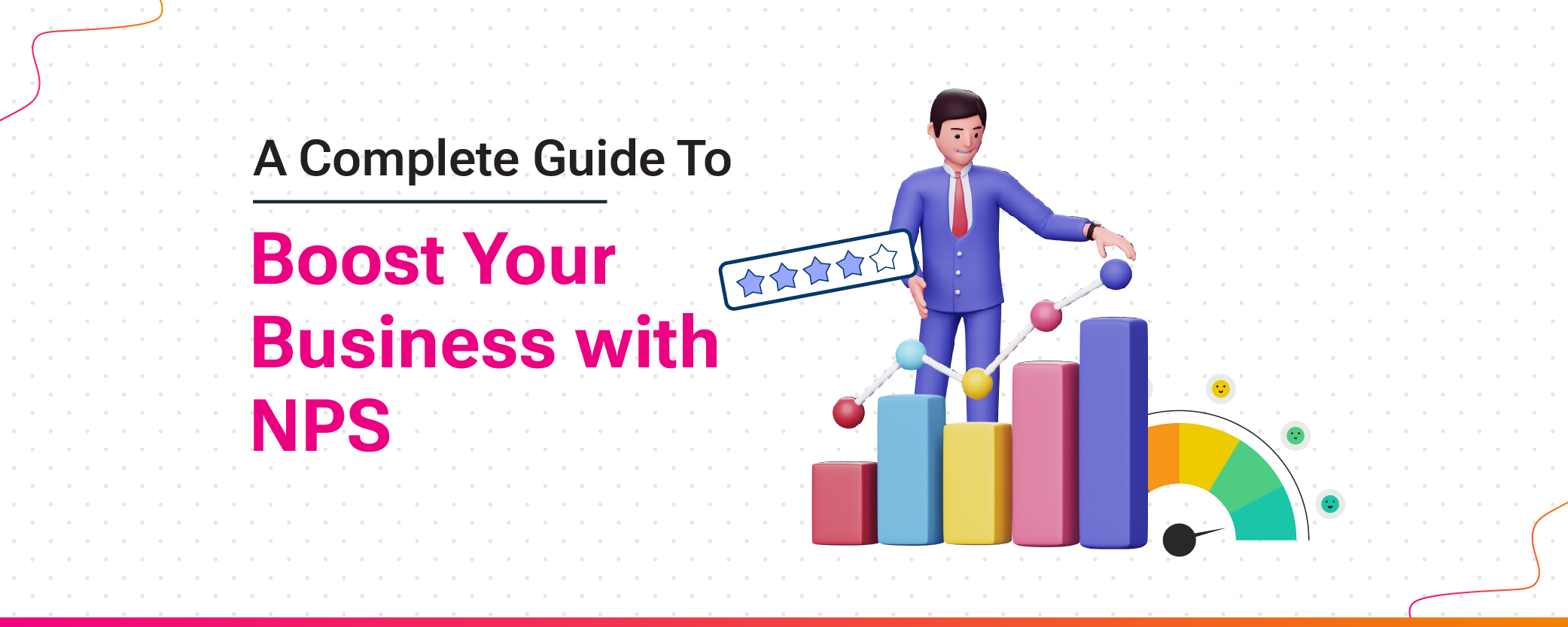Do you know about the Net Promoter Score? If you are a customer-centric company then we believe that you must have at least an idea about it. This simple metric is best for measuring customer loyalty and satisfaction but it is not limited to it. There are many other benefits of it for a business which makes it a very practical metric. Here's everything you need to know about NPS for your business success. Read the previous blog here
Understanding NPS Survey
Net Promoter score is a metric to measure customer satisfaction and loyalty for a brand. However, the question that a
Net Promoter Score survey asks is about the likelihood of a
customer to recommend a brand's product or services.
A typical NPS question looks like: “On a scale of 010, how likely are you to recommend our services to your friends and family?”. The answer to this question can be any rating of 010. Now, these ratings are divided into three categories and all the ratings are segregated into these three categories:
· Promoters: Those who rate you either 9 or 10 are called promoters and
these people are highly likely to do positive Word of Mouth for you.
· Passives: Those who rate you 7 or 8 are called passives and they are
found neutral in terms of publicity.
· Detractors: Those who rate you a 06 are detractors and they are highly
likely to do negative Word of Mouth due to a bad customer experience.
Calculating Net Promoter Score
Now let's look at how to calculate the NPS. As we talked about already it's a very simple metric, and the same goes for its calculation. To calculate NPS, you just need all the ratings to be segregated into the three categories mentioned above. Once done, here's how you calculate the NPS.
Let's say you want to use NPS in the banking industry and send 200 NPS surveys to your customers and these are the results:
·
Promoters: 100
·
Passives: 50
·
Detractors: 50
So, you first need to find:
% of Promoters = (100/200) × 100 = 50%
And, % of Detractors = (50/200) × 100 = 25%
Then, NPS = % of Promoters - % of Detractors = 25
Now, you can compare this score to the benchmark of NPS in banking but there’s a lot you can measure.
Metrics Influenced by NPS
NPS is a clear measure of customer satisfaction as only when a customer feels satisfied, does he/she agree to talk about the brand with his/her friends and family.
But, there are many other things that NPS helps to measure or has an impact on.
Customer Retention: If your NPS is high then it means that there are more promoters than detractors. Hence it signifies a likeliness of customer retention. But if the detractors are more than the promoters then, it means customer churn is most likely if you don't do anything about it.
Customer Acquisition: NPS is also inversely proportional to the customer acquisition cost or directly proportional to the customer acquisition through Word of Mouth or referrals.
Customer Loyalty or Advocacy: If a customer is a promoter of your brand, then it means he/she is an advocate of your brand too. And if your NPS is high, then your brand advocacy or loyalty is also high.
Five Steps to Conduct Effective NPS Surveys
1. Define Objectives: Clarify the purpose of your NPS survey (e.g., measure satisfaction, track loyalty, or pinpoint improvement areas).
2. Include Key Questions: Incorporate the NPS question, “How likely are you to recommend us to a friend or colleague?” along with an optional open-ended feedback question.
3. Choose Distribution Channels: Select appropriate mediums like email, SMS, or in-app surveys based on customer engagement preferences.
4. Time It Right: Send surveys shortly after customer interactions or purchases for accurate feedback.
5. Categorize Respondents: Segment respondents into promoters, passives, and detractors based on their ratings.
Interpreting Net Promoter Survey Results
When it comes to reading NPS results, here are the three steps to follow:
Find Out Trends and Patterns
First of all, look at the patterns and trends in the data you have got. You can do so by simply segmenting the responses based on factors like demographics, purchase history, etc. With this segregation, you can judge the satisfaction or dissatisfaction of a particular group based on the above factors.
Dig the Reasons Behind the Ratings
With the help of a follow-up question asking what's the reason for choosing the particular rating and a sentimental analysis tool, you can learn about the reason why people are satisfied or dissatisfied with your product or service.
As you get to know about the reasons behind the customers’ satisfaction or dissatisfaction, now you must take action to fix the problems. With this move, you can increase your customers’ satisfaction and loyalty.
Disadvantages of Employee Net Promoter Scores (NPS)
Employee Net Promoter Scores (NPS) can provide valuable insights, but they come with limitations. They offer a narrow perspective, as they focus only on loyalty, overlooking broader aspects of employee satisfaction. The results may also lack actionable detail due to their simplistic nature, making it harder to identify specific areas for improvement. Additionally, employees may feel hesitant to provide honest feedback, especially if anonymity is not guaranteed, leading to skewed results that affect decision-making.
Conclusion
To sum up, NPS surveys are one of the best ways to gather insights about a lot of things going on in a business. As a business owner or decision maker, you can use an NPS score to make decisions that result in the favour of your business’ growth.
To know more get in touch with our experts here
the question that a Net Promoter Score survey asks is about the likelihood of a customer to recommend a brand's product or services.

